How Did Walking a Dog Go From a Chore to a Status Symbol and a Billion-Dollar Business?
Once upon a time, walking a dog was just another part of the daily grind, something you squeezed in before work or after dinner. Today, it has become a thriving, tech-savvy, billion-dollar industry. GPS-tracked walks are now booked on mobile apps. The journey of dog walking tells a bigger story about how humans, pets, and modern life evolved together.
Ancient Humans Led the Way
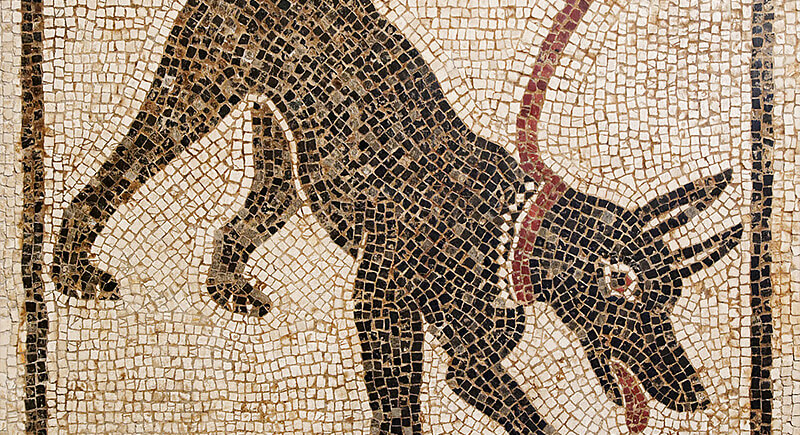
Credit: Wikipedia
Archaeologists have found 8,000 to 10,000-year-old carvings in Saudi Arabia showing people walking dogs on leashes. Ancient Egyptians later painted similar scenes around 3500 B.C. Back then, walking dogs likely helped maintain control over them as humans transitioned from a nomadic lifestyle to a settled farming life.
From Hunters to Household Friends
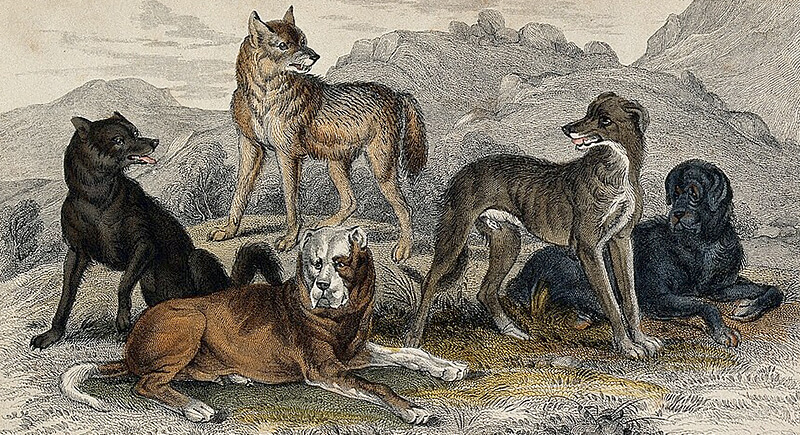
Credit: Wikimedia Commons
Dogs gradually became valued family members. By the 1800s, wealthy Europeans were inviting them indoors and proudly displaying them. As dogs became companions instead of workers, daily walks began to represent affection and care, rather than labor. That’s when the concept of a “leisure walk” with your dog really began to take shape.
The First Paid Dog Walker
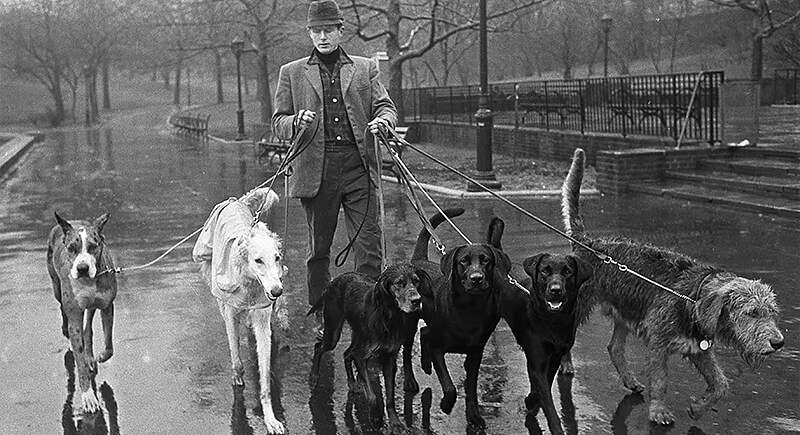
Credit: Reddit
The profession officially took off in the 1960s thanks to Jim Buck, a New Yorker who swapped his job in electronics for a leash and a pack of dogs. By 1964, he was making around $500 a week, equivalent to over $5,000 today. Buck’s venture, called the Jim Buck School for Dogs, ran for decades and turned dog walking into a real business instead of just a side gig.
Cities Created the Perfect Market
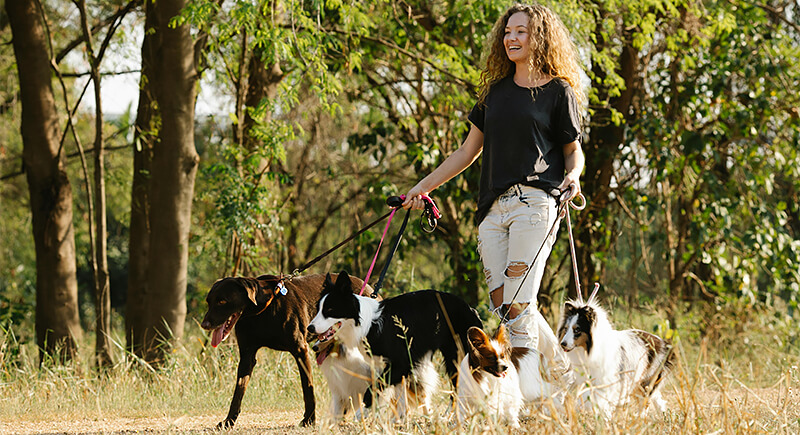
Credit: pexels
When city living replaced country homes with yards, people needed help giving their dogs enough exercise. As apartments became smaller and working hours increased, hiring someone to walk your dog became practical. The U.S. Census Bureau later reported that spending on pet-care services, including walking, more than doubled between 2007 and 2017.
From Street Strolls to Big Business

Credit: Wikimedia Commons
Dog walking may sound small, but the numbers tell a different story. Industry reports indicate that the U.S. dog walking market is projected to reach approximately $1.3 billion by 2025. In 2013, that figure was under $1 billion.
When Walking Became a Flex
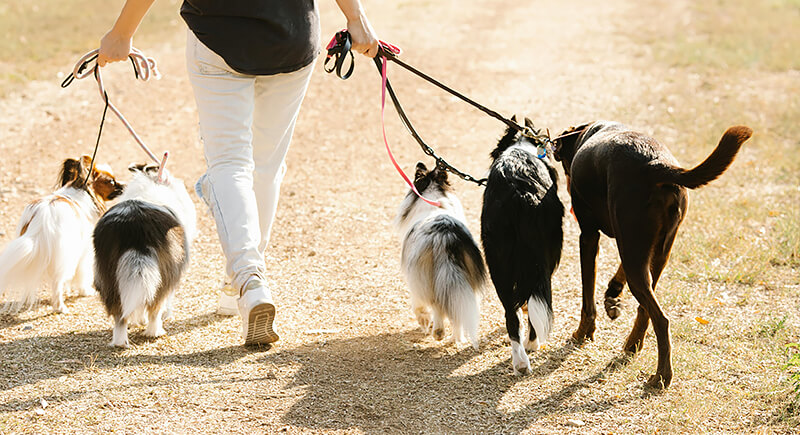
Credit: pexels
During the Victorian era, the wealthy used to show off dogs as part of their social standing. Having a servant take your dog for a walk was a way of saying, “We’re well-off enough not to do chores ourselves.” These days, the same idea persists, albeit in new forms. Hiring a professional walker or sharing stylish pup photos online still shows care and a luxury.
From Hobby to Hustle

Credit: Getty Images
Many walkers have grown their operations into companies with teams, vans, and branded gear. Some earn six figures annually in major cities. Kristin Morrison, for instance, turned her California walking business into a multi-employee operation before selling it for millions in 2013.
Apps Revolutionized the Walk

Credit: Youtube
Technology has made finding a dog walker as easy as ordering food. Apps like Wag! and Rover connect dog owners with walkers, complete with GPS tracking, photo updates, and instant payments. It’s convenient because owners can see exactly where their dogs are in real time.
Millennials Redefined Pet Care

Credit: pexels
Younger generations are driving the pet boom. Millennials, in particular, treat their pets like family and are more likely to spend on services such as walking, sitting, and training. They also value convenience and tech integration, which explains why app-based walking thrives. For them, hiring a dog walker is an investment in their dog’s happiness and their own sanity.
Low Start-Up Costs, Big Rewards

Credit: pexels
Compared to most small businesses, dog walking has an easy entry point. All you need is reliability, a leash, and plenty of patience. Still, competition has made professionalism essential. Many cities now require walkers to be licensed and trained in animal first aid. It’s a business that rewards trust and consistency.
Group Walks Boost the Bottom Line

Credit: Getty Images
Some dog walkers discovered that taking several dogs out at once is both efficient and profitable. Instead of earning $25 for one walk, walking four dogs simultaneously could net $100. The dogs benefit from socialization, while walkers multiply their income. It’s hitting two birds with one stone.
Training and Safety Set Pros Apart

Credit: pexels
As the industry grew, competition followed. Walkers today can stand out after taking animal-behavior courses, carrying insurance, and knowing how to manage emergencies. Clients expect pros who can handle anything from a distracted puppy to a busy intersection. That professionalism makes dog walking more respected and worth paying top dollar for.
The Pandemic Shook Things Up

Credit: Getty Images
COVID-19 briefly slowed things down when everyone stayed home, but the rebound was fast. Once offices reopened, demand for dog walkers exploded. In cities like New York, bookings surged as pet owners realized they couldn’t juggle work and long walks. The pandemic also led to an increase in the number of dogs, which fueled long-term growth in the walking industry.
Full Pet Services Bloom

Credit: Getty Images
Today’s dog-walking businesses often offer extras, such as pet sitting, daycare, or basic training. The field has matured into a broader pet-care ecosystem. This evolution demonstrates the significant investment people now make in their pets’ well-being.
Global Growth

Credit: Wikimedia Commons
Dog walking is gaining traction worldwide. As pet ownership rises across Europe, Japan, and urban parts of Asia, the demand for professional walkers is following suit. Industry analysts predict the global pet services market will surpass $40 billion within the next few years, with walking apps expanding into new cities every month.